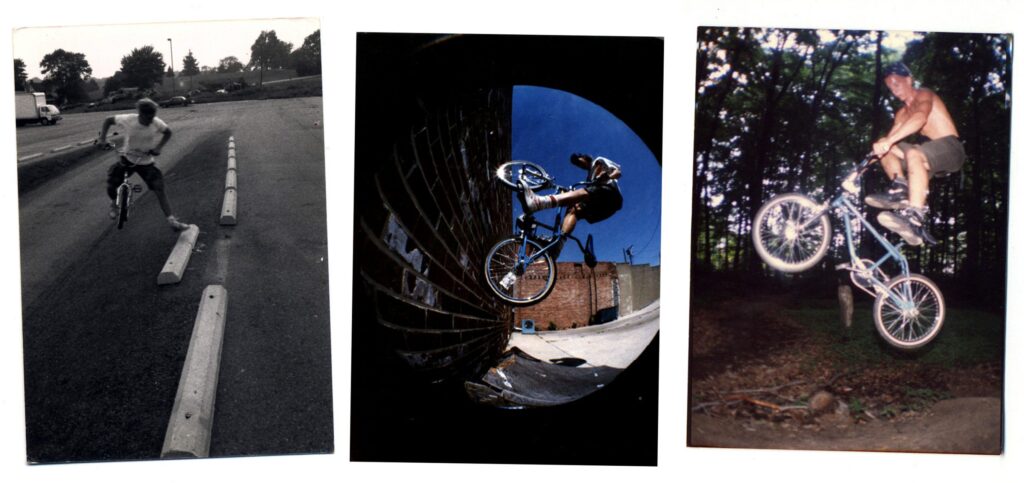Looking at things differently, via bikes & books
I think it all started because I rode BMX freestyle bikes, starting around age 15.
In the 1970s, BMX racers started doing simple tricks when not on the track. This led to flatland freestyle—basically doing tricks on a 20-inch bike in a parking lot. And there were ramps, too—wedge-shaped structures to ride up, bust a move, then ride back down. Then the ramps got bigger, mimicking the bowls of cement skateparks. People did “airs”—racing toward a vertical ramp and launching straight up, turning 90º ( or more), then coming back down.
This was all well-established by the mid-80s when I started riding. But then something funny happened. A “new” kind of riding became immensely popular, even though most of us had already been doing it without even thinking. “Street” riding—just riding around your yard or town or city, using the man-made architecture you came across.
You’d see an embankment leading up to a wall, and wonder how high and far you could “wall ride” it.
You’d see a long cement planter and try to “grind” it with your pegs.
You’d see a drainage ditch and want to launch out of it.
You were looking at the world differently. Walls weren’t just for shelter, planters weren’t just for decoration, ditches weren’t just for water.
I haven’t done trick riding in a long while, but this time in my life permanently shaped how my mind works. I look at everything just a little “differently”. Discarded chairs can have personalities. Household items transform. Abstract shapes take on meaning. Wood scraps become useful. Stories can be so much more than sitting around the campfire.
OK, so how does this relate to books or business? I think it’s the “different” angle that gives people and organizations an edge.
Apple didn’t give us what we asked for, it gave us what we needed.
Amazon didn’t sell us what it made, it sold us everything that was made.
These now ridiculously successful companies looked at two very established industries—technology and retail—differently.
Of course, that’s not all it takes, but it’s a great place to start. And while the following books don’t directly relate to business, they do help shift our perception of the world, encouraging us to see the wonderful, though less-than-obvious, possibilities it offers up to us every day.
And even if that doesn’t enrich your bank account, it certainly can enrich your life.

- Annals of the Former World by John McPhee | It would make sense that a book about geology would make you look at the world differently. I found it so much more interesting than you would ever imagine.
- How Buildings Learn: What Happens After They’re Built | So if McPhee’s book shifts your understanding of the natural world, Brand’s shifts it for the built world.
- Hyperart: Thomasson | And… if Brand’s book shifts how you see architecture when in use, Akasegawa’s will help you notice at the leftover bits and pieces that remain as time passes.
- Food Play | It’s fun, it’s cute, it’s clever, it’s food! See how fruits and vegetables can come alive… in a different way.
- Daniel Eatock Imprint: Works 1975-2007 | Everyday stuff seen a in not-so-everyday light. Art? Hobbies? Work? Projects? Yes.
- Liminal Thinking | Apple simply told us to “think different”, but this book tells you how.
- Uncommon Genius: How Great Ideas Are Born | It’s strange to read about inspiration and ideas and creativity from a pre-internet perspective, but the same themes abound—minus the instant gratification.
- Steal Like an Artist | Finally, a how-to book about creativity that you can read in one sitting and act on right when you stand up.
What books have helped you think differently?
Photos by Bill Keaggy & Adam Liber / ACC ‘zine.
